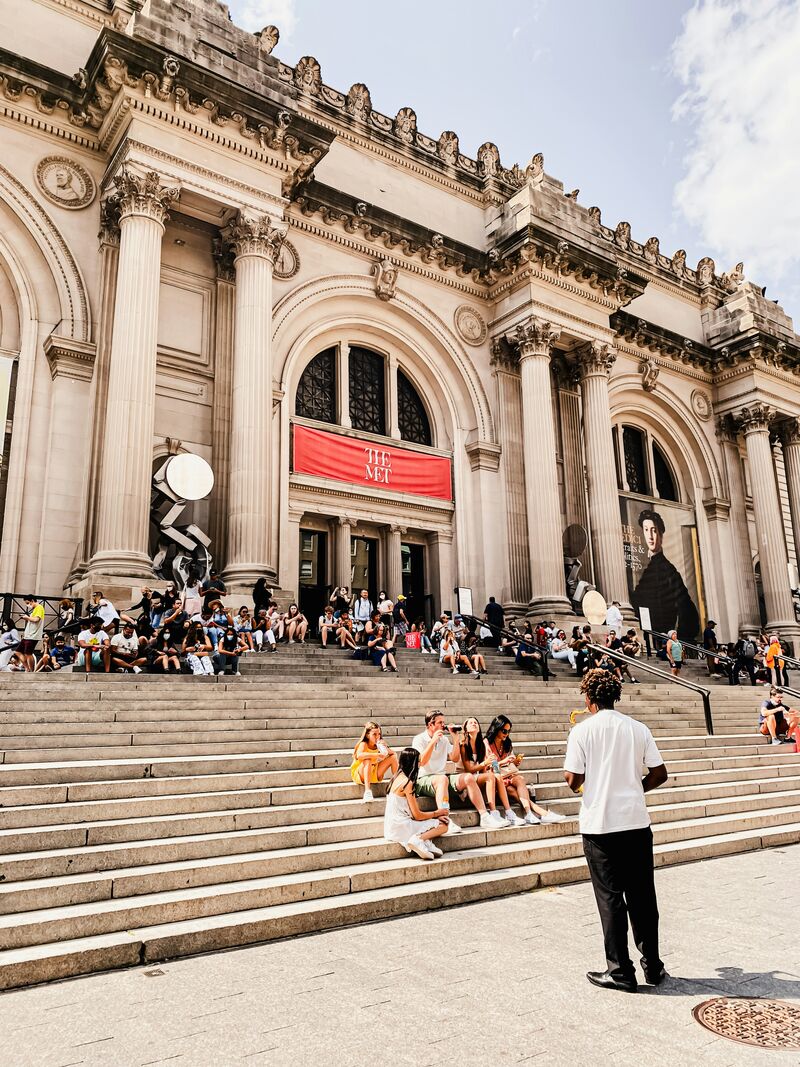
The Met Gala
For some background, the Met Gala is an annual event that takes place on the first Monday of May. The first Met Gala took place in 1948 and has since become one of the most prestigious fashion events. The purpose of the event is to raise money for the Metropolitan Museum of Art’s Costume Institute in Manhattan. Celebrities who are invited dress to match the theme, which corresponds to the new Costume Institute Exhibition, which opens the night of the Met Gala. This year’s exhibition and theme is “Superfine: Tailoring Black Style.”
Let’s talk about the Steps
Following tradition, attendees of the Met Gala arrived at the red carpet, which was blue this year, surrounded by photographers. Attendees enter the gala on the same steps as visitors, which span 13 ½ feet high and 154 feet long. While most of the steps are covered with photographers and interviews, celebrities climb the stairs stopping along the way for their photo to be taken. While the staircase is iconic and makes for jaw-dropping photos, it is not welcoming to those with a mobility or physical disability. Again this year, we saw no individuals attending the Met Gala who had visible disabilities. While the Met Gala celebrates diversity, culture, and inclusion by inviting designers and celebrities from around the world, we see a lack of representation of people with disabilities.
In a TikTok posted at the time of the Met Gala, Marissa Bode, who in the last year became the first wheelchair user to play Nessarose Thropp in Wicked, talked about wanting to see more individuals with disabilities attending the event. She followed up with another video stating that all she wants is to be heard, listened to, and included. As Hannah Diviney, a writer and disability rights activist, wrote in 2024, the stairs that act as the stage for this event act as a signal that they are not welcome.
The Met and the ADA
The Met Gala takes place at the Metropolitan Museum of Art, which is subject to ADA guidelines. The museum that hosts the event does provide accessible entrances; there is one about one block southwest of where the Met Gala entrance is located. While the public does not get a glimpse inside the museum at the time of the gala, during normal business hours, the museum provides many programs for visitors with disabilities. Some of their programs include touch collections, verbal imaging tours, and guided touch tours for those who are blind or partially sighted. They also provide interpreters for museum programs and real-time captioning for lectures when requested in advance, as well as transcripts for audio guides. Throughout the month they provide 3-4 workshops for individuals with intellectual and developmental disabilities.
Museums
Museums must provide accessible features to attendees, staff, and volunteers per section 504 of the Rehabilitation Act of 1973, which prohibits discrimination against people with disabilities by entities that receive federal funding. The law also works to guarantee that all visitors, regardless of their ability, can navigate and participate in museum spaces and their exhibits. If you are planning to visit a museum, check their website or reach out to a representative to ensure that they can provide the necessary accommodations.
Want to know more about accessibility in Museums?
You can also take our training course, ADA Accessibility in the Arts, to learn more about how the ADA reinforces the right to cultural access.
Check out our podcast episode with Georgina Kleege, a professor emerita of English at the University of California, Berkeley. In her recent book More Than Meets the Eye: What Blindness Brings to Art, she discusses the intersection of blindness and art.